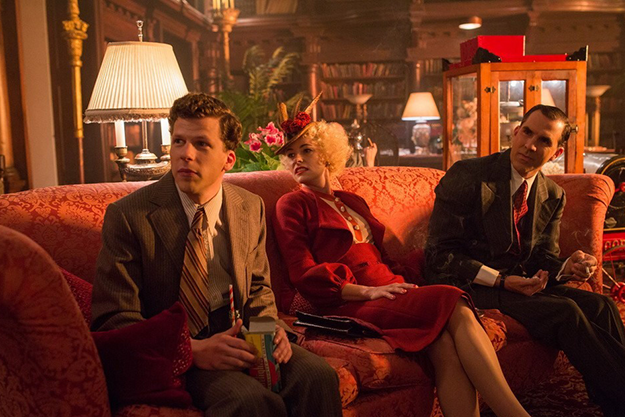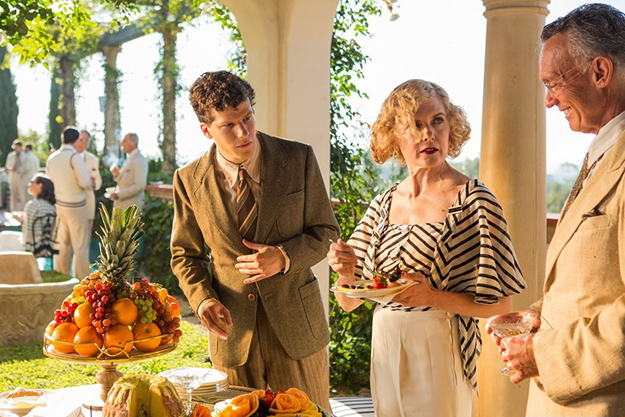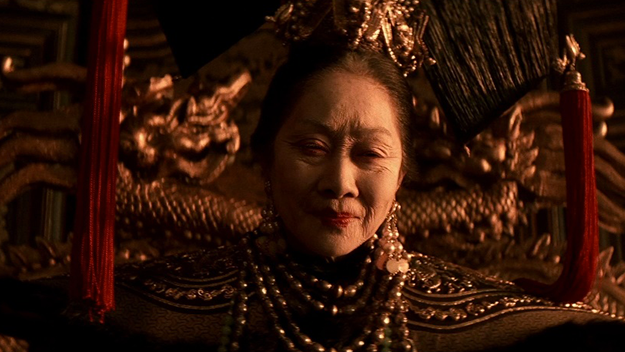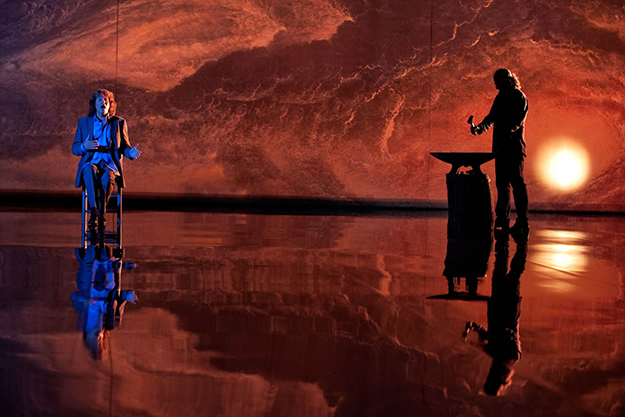Interview: Vittorio Storaro
This interview begins a series with influential cinematographers who attended the 2016 Camerimage International Film Festival of the Art of Cinematography in Bydgoszcz, Poland, in November.
To consider Vittorio Storaro’s work is to journey through the history of modern cinema at its grandest. He has shaped the look of some of the most monumental films of the second half of the 20th century, including The Conformist (1970), Apocalypse Now (1976), Reds (1981), and The Last Emperor (1987). Indissociable from his collaborations with Bertolucci, Coppola, Warren Beatty, and Carlos Saura, Storaro’s vision of cinematography celebrates the union of opposites: day and night, life and death, good and evil. Whether it’s his unnerving, theatrical use of chiaroscuro as a visual allegory of Fascist Italy in The Conformist, or his evocative rendition of the development of a man’s identity through color symbolism in The Last Emperor, Storaro has generated bold and philosophically laden imagery from every script he has tackled. Taking for granted that cinema represents a synthesis of all the arts, he continually aims to convey the musical and painterly possibilities of moving images, mixing and alternating between Baroque and Romantic expressions of human psychology and emotion in his quest for the sublime.
Film Comment spoke with Storaro, 76, about his philosophical conception of cinematography and his recent collaboration with Woody Allen, on Café Society (2016).

Café Society
Café Society is one of Woody Allen’s most stylized films. Your lush and ethereal cinematography powerfully captures the glamour and artificiality of Golden Age Hollywood, while also paying homage to the exuberant films made during that time. What did your initial discussions with Allen revolve around?
Woody told me at the beginning: “Read the script and I am sure you will find some visual opportunities.” Because that was my main concern. In fact when I read the script, I immediately made a distinction between the first part of the film, which is set in the Bronx around 1935, and the second part, in which the protagonist moves to Hollywood, a completely different world. That gave me two different visual possibilities from the start, and I decided to confront these worlds. In fact, I never like when films are visualized with a single idea, because that makes them flat. In my opinion, cinematography has the same power as music to communicate emotion. Cinematography, through the relationship between light and shadows, and the relationship of different colors on the color spectrum, can really convey emotion. The story is never on the same line—it has movements, like music. So that’s what I’m always searching for: to describe visually the same kind of emotion as music. I think that cinema nourishes itself from several arts, but the three main categories are: image, music and mood. When you have a balance between these three elements, you can really convey a good message to the audience, because they receive visual and aural information about the story as well as emotional vibrations.
So once I recognized the dichotomy in the script, the first thing I did was to try to understand the time period, because the 1930s in the United States were different from the 1930s in Italy, Germany or France. I was looking at a lot of references: paintings, pictures, films, music… Whatever gave me ideas to play with. Of course, you are not just going for a cold representation of an era—you always have to be connected to the story. Each character has his own life, so you try to situate him within the time period and see how they interact. When characters go somewhere, they bring with them, not only their memories, but also their habits, what they know. So when Bobby moves to Hollywood, he brings something from the Bronx with him; his inner life. When he goes to Hollywood, he sees how they live there, so when he returns home, he carries back what he’s learned. Knowledge is never something stable or linear.
It’s a fluctuating graphic.
Absolutely. So that was my idea: to have a visualization of the Bronx and a visualization of Hollywood. When the character moves back and forth between places, he transfers things, say the feeling of the sun, moon, artificial light and natural light, from one place to the other. I was trying to bring this new piece of knowledge into every scene. You know, I want to push young cinematographers to understand that cinema does not start today—that’s why I’m giving this seminar here. It does not start when they push the record button on a digital camera. There is so much history before, and it’s important that they understand where they come from. Believe me, when I arrived here two days ago, I went to get my festival badge, and there was a long line in front of the letter S, because in Polish there are so many last names starting with that letter. Two nice gentlemen realized I was a foreigner and said: “You don’t have to wait for an entire line. Please come with us.” So we started speaking and I understood that they were young directors. Talking about what I’m doing and what I did, I mentioned the name of Bernardo Bertolucci.
They didn’t know who he was?
No… So I said: “Wait a minute. You want to be a director, how can you not know who Bernardo Bertolucci is? I can understand that you haven’t seen all his movies; maybe you’ve seen only one, or maybe you’ve only heard of him. But it’s impossible that you don’t even know his name.”

Café Society
I went to film school and happen to be very familiar with this scenario…
The same thing happened with the cinematographers. They take for granted everything that’s been done until now. It’s true that when you’re moving from one technology to another, there are different kinds of knowledges involved. But the principal always stays the same. And you have to start with those principles.
You wrote a multi-volume book in 2010 called Writing with Light and intended as a kind of comprehensive overview of your career. Was the writing process mainly an opportunity for you to assess your place in the history of cinema and the visual arts?
Not only that. The reason why I wrote that book is because I discovered at one point in my life, after studying for nine years in cinematography school, that I was very knowledgeable in technology but I didn’t know anything about the art. And when I discovered that, I thought to myself, “My God, I only have one leg.” So I started to do whatever I could—read, listen, watch—to gain an awareness of the past and other art forms, because cinema constantly nourishes itself from other arts. And I was ignorant. So I said to myself: “I think I need to write down my research.” It’s not about myself, but about what I learned from the philosophers. So I started to write and take still photographs, because in the end, I’m a writer with images, not with words. But mainly I was putting together the thoughts of many philosophers.
Like whom?
Wittgenstein, Plato, Aristotle, whoever had done research in the visual arts. And I wrote one volume just about light, and one volume about color, because after Apocalypse Now, I felt the need to stop and understand exactly what these things are—I was using them without knowing anything about them. So I stopped for one year and stayed in my house to read books, watch movies, and listen to music, but mainly read books, to understand what was “inside” light and color. I discovered the symbology, physiology, and dramaturgy of color, and I started a new chapter in my life. I did the same again after The Last Emperor, but this time my research was focused on the primary elements of life as described by the Greek philosophers.
Of course, you have to be conscious that you can’t know everything, it’s impossible. But once in a while, there comes a moment when you have to stop and regenerate yourself. And after that, you can continue. Otherwise, you do a photocopy of yourself, of your first knowledge. I was lucky that I understood that, and many young people are in a hurry to reach success. They don’t think that maybe they should prepare themselves to be able to express themselves in the best possible ways. Only then can you maybe reach success. But if success is your aim, you very rarely arrive there.

The Last Emperor
Your visualization of a script often stems from the characters, and since you’ve mentioned Apocalypse Now, I’d like to ask about your process on that film of crafting such a close identification between the cinematography and the protagonist. How did you experience entering Willard’s mind that deeply and representing his descent into madness in the most hypnotic and primal way?
Once again, first you have to come up with a main idea that leads you in one direction. At the beginning, I said to Francis Ford Coppola, “I don’t think this is my kind of movie.” What was I supposed to do with a war movie when in Italy I was used to doing films about the philosophers or political films with Bernardo Bertolucci? But Francis said: “No, Vittorio. This is not a war movie. This is a movie about civilization. Please read Heart of Darkness by Joseph Conrad, and you will understand my concept.” And he was right. I read and understood that there was one principal idea in Conrad’s book: when one culture overpowers and superimposes itself over another culture, it creates an act of violence. And that’s what the film wants to say: the truth. When a country invades another, thinking they are bringing civilization, modernity, and so on, they commit an act of violence, because they don’t respect the other culture. This has happened throughout the history of mankind. I understood that it was something that I could make my own, because it’s a universal concept. So how to translate this concept visually? I said to myself: “Oh my God, I can have the artificial light superimpose itself over natural light, and artificial color over natural color.” And I created this kind of visualization of two different cultures: the visual conflict represents the conflict between the cultures.
Did Willard’s psychological journey play into your visual approach at all?
In this case, the main principle was the fact that a civilization destroys another one in order to grow. But, don’t get me wrong, without this kind of mixing of cultures, you cannot have an evolution: each one would stay the same. Sometimes, this mixing happens in harmony, like men and women: they can meet, have a beautiful relationship and produce something important through the union of their bodies, personalities, and mentalities. Other times, they are in conflict. But we always need this kind of relationship between two different elements. And after I came to that realization, I thought about what my life meant, what my aim, my main concept were. Basically, when we are working in an art form, whether it’s acting or making films, we try to put our personality into what we’re creating in order to understand who we are. And I understood, especially after Apocalypse Now, that my concern was really to find an equilibrium between two opposite elements.
In Carlos Saura’s films, your primary concern seems to be the relationship between the mind and the body. What’s fascinating to me from a formal standpoint is that your focus in Flamenco [1995] and Tango [1998] is on bodies, since you are filming dancers—the camerawork is pretty conventional: a patient recording of movement mostly in static shots—but you still incorporate psychology through those color-lit and painted backgrounds, which literally act as projections of the dancers’ internal moods. How did you come up with that stylistic device?
The first meeting with Carlos was in Kyoto. I was a jury member of the Tokyo Film Festival, and Carlos had one film in another competition, so he came over there. During our first meeting, he showed me some of his drawings: they had this square element, with some people around. And he said, “Vittorio, I want to tell the story of flamenco without telling the story. I would like people to understand the story through the rhythm—the rhythm of the dance, music, singing, camera, the rhythm of the light.” And I said, “Carlos, I am used to having an articulate story to follow. Can you at least help me understand some basic elements?” And he said, “I don’t want to tell, I want to show.” And I said, “Okay, can I have the lyrics of every single song?” And he said, “Yes, absolutely.” So he gave me a list of the different numbers he wanted to have, and I realized there was a beautiful story running through all of them. In flamenco, they don’t hold performances during the daytime, only at the end of the day. So I thought, “That’s a good start. Maybe we should set everything at sunset.” And usually, a lot of the numbers were led by male figures. So I said, “Carlos, that’s great. Do you mind putting this number that you put over there right here?” And he said, “That’s no problem for me.”
So I represented those numbers—the singing, dancing, music—with the color of the sunset. And after the sunset, you have the moon rising. So then, I started to include the female element, connected with the unconscious part and the moon. And I said, “Okay, we can start like that.” So I made a kind of mosaic. I was telling the story from when the sun is setting and the moon is rising, until the sun comes back at dawn, and we have a new cycle. I went for the principle of life, of going in circles. We are born, we grow up, we mature, we die, we are born again—we are part of the infinite cycle of rebirth. This is a Buddhist philosophic thought: we become more and more energy until we become matter. So I put a major philosophic thought into these little numbers of flamenco. And I said, “Well, can we begin with just a square?” Plato has his own special symbolism, and for him, the square represents the earth. So as the story unfolds, we position the screens in a triangular way, as though the square is being raised. And at the end, we finish with a circle. We have the three main platonic figures: square, triangle, circle. So Carlos said, “That’s fine. If you feel comfortable with that, that’s okay.” [We both laugh.]

Flamenco
So he let you do as you wish?
Well, I was bringing a new way of representing exactly what he wanted to represent visually. That’s my profession. So even without a verbalized story, I was able to tell the story.
Vilmos Zsigmond, who shot three of Woody Allen’s recent films [Melinda and Melinda, 2004; Cassandra’s Dream, 2007; You Will Meet a Tall Dark Stranger, 2010], said in an interview that Allen is more concerned with story and performance than the visual aspects of his films, and that he wouldn’t look at frame while shooting unless Zsigmond encouraged him to do so. Did you feel like Allen was in synergy with you when you were working together and spoke your visual language?
Without doubt, Woody knows more about writing and verbalizing the story. But he is certainly a good director, and particularly today, after all the experience he’s had with Gordon Willis, Sven Nykvist, Vilmos Zsigmond, and Darius Khondji. He has the sense of a shot, and knows very clearly if it works or not. He probably will not suggest to you or lead you in that direction. Every morning, when we arrived on set, he said, “Vittorio, let’s talk about how we want to represent this sequence. And after that, I’ll call the actors and tell them what to do according to our plan.” I listen to what he says, and usually, he has a very basic vocabulary or concept. It comes from the American culture, to have, say, a master followed by a close-up. Sometimes, this works perfectly. And other times, I would say: “Can I propose something else?” And he would say: “Of course, Vittorio.” And when I proposed my idea, he could right away visualize what I said and said, “I think it works. Okay, let’s do that.” He would maybe add something or if I said, “What do you think about this? Instead of having these two people sitting here and having a conversation, why don’t we start downstairs?” So we start to film the characters climbing the steps and they finally find a place to sit and have a conversation. Woody is fantastic—in 30 seconds, he’s able to find a way to make the behavior of the character lead to that point. He will include the server taking the chair or whatever, because he likes the action and the sense of something starting. He’s fantastic with these kinds of things. You tell him the kind of space that you would like to work in, and even if he’s initially set the scene in the bedroom, he reinvents it somewhere else. If he feels that an idea can elevate his concept, he loves it.
For example, do you remember the scene in which Kristen Stewart comes to see Jesse Eisenberg, and she’s upset because she broke up with her lover? We shot the scene with the prostitute before that, and I had an idea for it. In the 1930s, electrical sources were not reliable—sometimes they would flicker, sometimes they would shut off—and I said to Woody: “Why don’t we do this scene in complete darkness? They lose power and have to light candles.” And he said, “Vittorio, I like this idea, but for the other scene.” I thought it would be much more funny to film the conversation with the prostitute in candlelight. But Woody said, “Yeah, it would probably be funny. But I need something more romantic for the other scene and maybe that would serve the story better.” And he was right. He needed something in that scene, he didn’t know what, but he took my idea and put it there, and it worked.
Yonca Talu is a filmmaker living in New York. She grew up in Istanbul and recently graduated from NYU Tisch.







